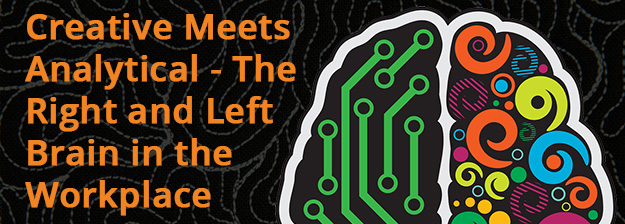
by Auroriele Hans October 20th, 2015
“We don’t go online. We live online.” –Joe Demike, Head of the Google CX Lab
Consumers don’t spend all of their time on the web but certainly a lot of it. When they’re there, they have specific tasks to complete. As Joe Demike said at Pubcon 2015, customers go online to watch, know, find, and buy. Their options for accomplishing these tasks are greater than ever before. In the past, a customer prepared for a Sunday barbeque by typing “best grilled steak” into Google from her desktop; today she asks Siri, “How do I grill the best steak?” from her smartphone. She interacts with content about grilling steak, where to find the best butchers in her city, or how to ship premium cuts to her doorstep in the days leading up to the barbeque. Across devices and channels, search serves as consumers’ digital personal assistant, and the brands that deliver the best experience with the least friction are the ones they’ll choose.
What does this mean for digital marketing? It’s in the midst of a paradigm shift: “What worked in the past is… past,” said Bruce Clay at Pubcon. Search engines and the devices that connect consumers to them have advanced significantly. As a result, consumers interact with search in more sophisticated ways and have higher expectations of how brands help them fulfill their needs online. The challenge for brands will be giving consumers exactly what they want when they want it. Meeting it won’t be easy. It will require greater resources, time, and patience. In effect, brands will need to be the best digital personal assistants to win the hearts, minds, and dollars of consumers.
After considering the presentations of leading experts in the digital marketing industry at Pubcon 2015, we at SEO Savvy believe this is the message for digital marketers going forward. Below are some key takeaways from the conference that support this view.
Pubcon 2015 Key Points
Mobile
“Approximately half of all searches for automotive-related content came from a mobile device last year. We know it’s important to reach people in the moments that matter, regardless of the device they’re using.” –Susan Thomson Director of Media & Social Media for Fiat.
“Win every moment that matters.” That was the message from Matt Rogers, Head of Industry and Large Customer Sales at Google. As Google confirmed last spring, more searches take place now on mobile devices than on computers in the U.S., Japan, and eight other countries. People check their smartphones 150 times a day, which means brands have significantly more chances to interact with them than when search was restricted to a desktop. A typical day could start with the alarm on a woman’s iPhone waking her up. Before even getting out of bed, she checks the weather and Facebook, where she discovers Coachella tickets are on sale. On the train to work she buys tickets and starts searching for inspiration for what to where, asking Siri, “What are the latest festival styles?” On her lunch break from work, she locates the nearest Creole food truck via their Twitter update and shops for clothes while she eats. Throughout the rest of the day, she may chat with friends about the festival on various social platforms. All of this has occurred before 5 p.m.
Consumers’ smartphones are often the physically closest devices to them and the ones they would feel most uncomfortable allowing others to use. Consequently, they’re twice as likely to feel a personal connection to brands on mobile. This fact is reflected in the numbers: 2014-2015 Google Analytics aggregated data show a 29% increase in mobile conversion rates.
What is the takeaway for digital marketers? The biggest opportunity to reach consumers and convert them on mobile is in the smallest moments. They have to make sure their client’s brand is always present on mobile, they’re providing a frictionless mobile experience, and their marketing messages are speaking to their target audience’s specific needs.
Machine Learning
“Stop thinking about ‘driving traffic.’ Start thinking about ‘visitor task completion.’ ” –Duane Forrester
Imagine a digital personal agent that could watch for the lowest priced concert tickets and buy them for you, scan for discounted airfares to selected destinations and book them, and reorganize your calendar to prevent you from being stuck in traffic. Digital personal assistants like Google Now and Microsoft Cortana already exist. Duane Forrester of Bing predicts that they will evolve into digital personal agents that use data about you and your permission to act on your behalf online and offline. There will no longer be a need for a destination page, for a website: a digital personal agent, via search, will bring solutions and answers to you. Such technology is the product of machine learning, which you’ve already benefitted from with better search results.
Google has consistently stated that its primary objective is to deliver high quality, relevant search results to users. In his keynote speech, Rand Fishkin pointed out that the company has acted on this statement by heavily penalizing websites using the tactics that once yielded rankings, such as link schemes and keyword-rich anchor text. Google’s use of entity technology, generated relational mapping that uncovers the association between different data points, has advanced the company closer to its goal and made the online search experience much richer for users. When a user searches for Thomas Jefferson, for example, Google returns not only a list of links but also a box, called a Knowledge Graph, on the side of the results page with basic facts about the man. Instead of having to navigate to other sites, users can resolve their query immediately.
Now the company’s employees are no longer determining the ranking factors for its algorithms. Instead they are relying on machine learning: “a method of data analysis that automates analytical model building.” Machine learning uses algorithms that iteratively learn from data to allow computers to find hidden insights without being explicitly programmed where to look. Rand Fishkin asserted that machine learning technology is defining Google’s algorithm based on how users react to search results, such as how quickly they click and then click away from a result, how long they stay on the page, and the number of additional results they review before finding what they’re looking for. Those working within the walls of Google may not know all of the ranking factors in the algorithm. The objective will be for the machines to tailor the algorithm to produce the best user experience. Winning their favor will require 10x better content, according to Fishkin.
Content Marketing
“If your content was removed from the web, would anyone miss it?” –Will Reynolds, Founder at Seer Interactive
For years, digital marketers have been fighting for high organic rankings for their clients, with the mindset that if they built links and published blog posts rankings would increase. In his presentation, “The High Cost of Free Traffic,” Reynolds made a salient point: high organic rankings are expensive to obtain and may not even be worth as much as Google populates more and more of the top of the search results page with paid ads and rich answers. Instead of focusing exclusively on rankings, digital marketers should also consider why people buy—or consume and share content.
During the conference, Fishkin and Reynolds used an article on how to grill steak by the website Serious Eats as example of 10x content. Why was it so great? The article taught Reynolds about the various types of steak and cuts, how to buy good steak, techniques for preparing it like dry aging, and even how to tell the difference between rare, medium, and well done. He was an expert on steak and would receive more compliments on the meals he prepared after reading the article. As he said, the content leveled him up—it made him a better version of himself. Reynolds’ point was that, “People don’t buy products, they buy better versions of themselves.” He asked the crowd, “Is YOUR content Leveling People Up?”
When marketers invest more time and resources in producing 10x content, people are more likely to share it and to stay on the page after clicking the link from the search results page—showing Google’s machine learning system that the content is highly relevant. Fishkin is an influencer. Since he shared and recommended the Serious Eats article on Moz and social, the brand now comes up for “best ramen” and “best pizza” in addition to “best grilled steak.” It’s become a resource people know and trust.
Reynolds underscored that even 10x content sometimes needs a nudge with social or paid social, pointing out that consumers often buy items they never searched for. However, digital marketers should be making content that’s worth paying for people to see, especially given the diminishing return on organic rankings. When it comes to content development, he said, marketers should start by taking the easy answer off the table.
Applying the Message to Your Digital Marketing
Transforming a brand into a digital personal assistant may seem like a tall order—and it is. The key takeaway from Pubcon 2015 is that consumers expect more from technology and brands because they increasingly rely on both to navigate their daily lives. This presents a tremendous opportunity for digital marketers to make the brands they manage ever present in consumers’ minds. Seizing it, however, will require adaptability as search becomes less about returning webpages and more about delivering the right information at the right time across channels and devices. As Fishkin said at the conference, “We face an increasingly complex landscape.” Moving forward, marketers may fair best if they start by taking the easy answer off the table.







